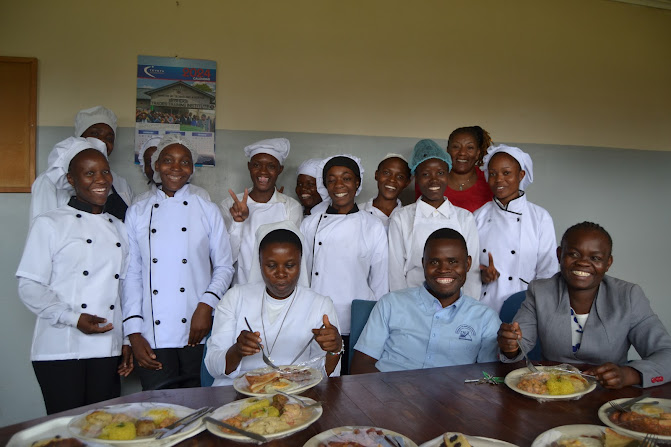By Derrick Silimina
Working in a man’s world, women are much less likely to end up in key leadership positions than their male peers but their dash to climb the ranks early takes a toll.
For this reason, the transformative power of FQM Trident Limited is a testament to the mining giant’s faith in its workforce. The company’s first-ever female Technical Training Manager Mulenga Tembo is the proof.
“When I came to Kalumbila, I knew that mining is not for the faint-hearted. So, it’s rough and tough, but I think women still have a place in mining and we belong here as well. Therefore, being in the Training Department is something that I’ve always been passionate about,” she explains.
Tembo’s academic journey started at Lusaka’s Mary Queen of Peace Primary School, then called St. Mary Primary School, before moving to Kabulonga Girls Secondary School where she completed Grade 12.
She later obtained a Bachelor of Business Administration from the Zambia Insurance Business College Trust (ZIBCT). Having started her employment journey with an international firm, Tembo was placed in the Training Department, an area she had always been interested in. After she studied the world of Human Resource generalists, Tembo then discovered that her first and only true love was training and development.
“My first job post-qualifying was actually with a multinational company and I was placed in the Training Department. From there, as we tend to do when we are young, I started hankering for greener pastures and a little bit more of expanding my career in the HR field,” Tembo recalls.
NEW HORIZONS
In 2017, attracted by the promise of new horizons and fresh challenges, Tembo joined FQM Trident as HR Superintendent. Little did she know that her arrival would set the wheels in motion for a pivotal moment in the company’s history.
Tembo’s professional excellence, marked by her determination and commitment to problem-solving skills did not go unnoticed and later caught the attention of her supervisor at Zambia’s largest copper mine.
Fast-forward, a couple of years later, Tembo’s HR Manager recognized her strengths and assigned her to lead one of the Centre of Excellence units at the mine site.
The units focused on resource and talent management development. She affirms that in 2022, her expertise earned her promotion to Technical Training Manager at FQM Trident.
“Working in a male-dominated industry, there’s always been a feeling or thought that training or mining is not for women. This is not the case. I think women have a place in mining and we belong here as well.”
INITIATIVES
After a year in her current portfolio, Tembo has spearheaded initiatives to revolutionize employee development at the mine, setting new industry standards and enhancing the company’s reputation for nurturing local talent.
For Tembo, 45, becoming FQM Zambia’s first female training manager was not without its challenges but rather than being deterred, she was even more determined to make it work.
She emphasizes that being knowledgeable about one’s field and having data on hand helps one to contribute effectively to the team.
“Training a diverse workforce is very challenging but meeting these diversities needs a training platform for everybody. We have on-the-job training, we have classroom training, we have infield training that offers practical application of the training. We also have simulator training by way of our simulators, all of which help to address the need of a diverse workforce that has diverse learning skills,” she stated.
ACHIEVEMENTS
Highlighting one of her greatest achievements thus far, Tembo has been formulating a comprehensive training strategy aligned with FQM’s vision and objectives and has spearheaded initiatives that empower employees to enhance organizational capabilities.
“I’m proud of the fact that when I came into the department one of the things that we embarked on was coming up with a training strategy. We based our training strategy on our CEOs, people first strategy—a strategy that helped us as a Training Department extrapolate what it is that we needed to do. We came up with a robust training strategy that is going to be running for the next two to three years,” she notes.
Asked how she strikes a balance between work and home life, Tembo chuckled, “I am so blessed that I have a great husband and a lovely son who supports everything that I do. I’ve got sisters who listen to me, a great housekeeper assisting me at home when I get overwhelmed, and one or two friends who keep me sane. They allow me to laugh at myself and encourage me through some of the mistakes that I make on this journey.”
DEVOUT
Growing up in Lusaka, Tembo is a devout Christian by faith who draws her inspiration from Jesus Christ through her father who was a colonel in the Zambia Army, and a mother who was a secretary.
She is the youngest in a family of five sisters. In her spare time, Tembo loves cooking, gardening, listening to Gospel music and a wide array of podcasts.
Driven by her unwavering pursuit of excellence and a deep-rooted desire to make a difference, Tembo looks to the future with steadfastness as her leadership philosophy is anchored on a fervent belief in service and selflessness.
“Leadership is not for the faint-hearted, leadership is also not for the selfish, it’s also not for the self-centered or the self-serving; leadership is an act of service. If you want to be a good leader, you need to be somebody that is service-oriented. Every day, when I wake up, one of the first questions that I ask myself is how can I do my job better to ensure that my people can do their job better. I need to be a vision carrier that my team can look up to and be proud of.”








.JPG)